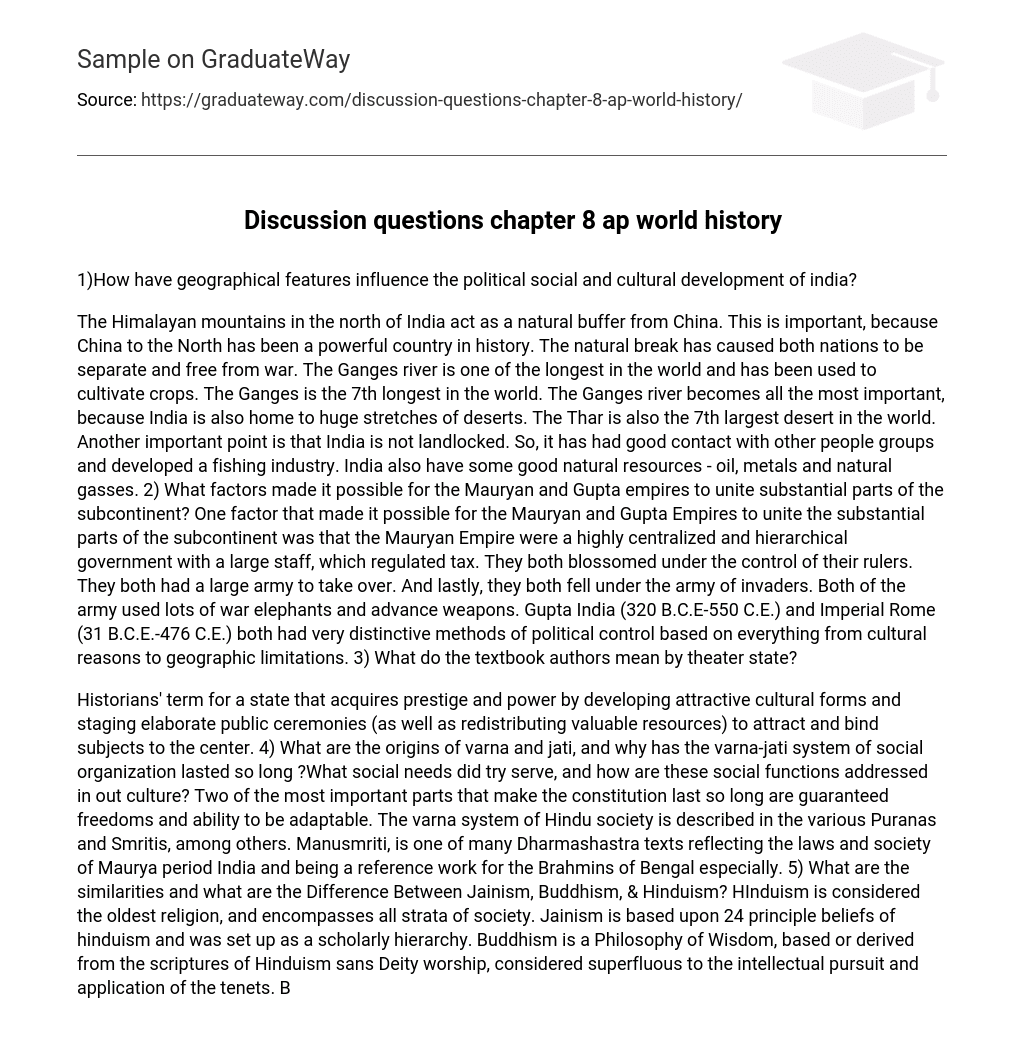1)How have geographical features influence the political social and cultural development of india?
The Himalayan mountains in the north of India act as a natural buffer from China. This is important, because China to the North has been a powerful country in history. The natural break has caused both nations to be separate and free from war. The Ganges river is one of the longest in the world and has been used to cultivate crops. The Ganges is the 7th longest in the world. The Ganges river becomes all the most important, because India is also home to huge stretches of deserts. The Thar is also the 7th largest desert in the world. Another important point is that India is not landlocked. So, it has had good contact with other people groups and developed a fishing industry. India also have some good natural resources – oil, metals and natural gasses. 2) What factors made it possible for the Mauryan and Gupta empires to unite substantial parts of the subcontinent? One factor that made it possible for the Mauryan and Gupta Empires to unite the substantial parts of the subcontinent was that the Mauryan Empire were a highly centralized and hierarchical government with a large staff, which regulated tax. They both blossomed under the control of their rulers. They both had a large army to take over. And lastly, they both fell under the army of invaders. Both of the army used lots of war elephants and advance weapons. Gupta India (320 B.C.E-550 C.E.) and Imperial Rome (31 B.C.E.-476 C.E.) both had very distinctive methods of political control based on everything from cultural reasons to geographic limitations. 3) What do the textbook authors mean by theater state?
Historians’ term for a state that acquires prestige and power by developing attractive cultural forms and staging elaborate public ceremonies (as well as redistributing valuable resources) to attract and bind subjects to the center. 4) What are the origins of varna and jati, and why has the varna-jati system of social organization lasted so long ?What social needs did try serve, and how are these social functions addressed in out culture? Two of the most important parts that make the constitution last so long are guaranteed freedoms and ability to be adaptable. The varna system of Hindu society is described in the various Puranas and Smritis, among others. Manusmriti, is one of many Dharmashastra texts reflecting the laws and society of Maurya period India and being a reference work for the Brahmins of Bengal especially. 5) What are the similarities and what are the Difference Between Jainism, Buddhism, & Hinduism? HInduism is considered the oldest religion, and encompasses all strata of society. Jainism is based upon 24 principle beliefs of hinduism and was set up as a scholarly hierarchy. Buddhism is a Philosophy of Wisdom, based or derived from the scriptures of Hinduism sans Deity worship, considered superfluous to the intellectual pursuit and application of the tenets. Buddhism is by far superior in its substance of followers of the three with advocates all over the world.
6) What factors might explain srivijaya ability to organise a number of ecological zones into a single kingdom?
Naval military forces, Srivijaya’s maritime was constantly managing their trade network and always wary of potential rival ports of neighboring kingdoms. 12 months ago. Srivijaya or Sriwijaya was a powerful ancient Malay empire based on the island of Sumatra, modern day Indonesia, which influenced much of Southeast Asia. The earliest solid proof of its existence dates from the 7th century.





